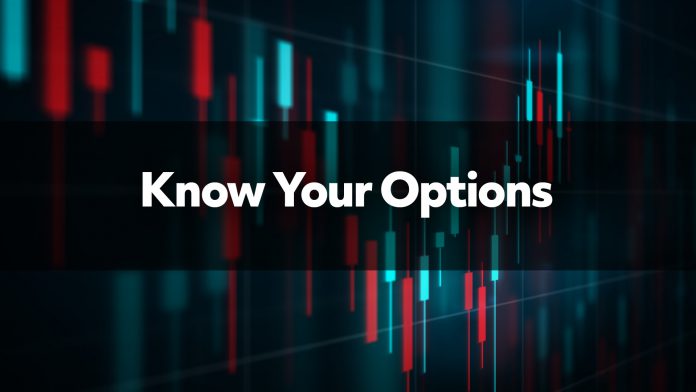Next week is the biggest week of earnings season. More than one-third of the S&P 500’s members announce results, including the biggest companies like Apple.
This blog post will focus on options strategies that can help stock investors during earnings season. It can be a time of high volatility and dramatic price moves, which options traders can potentially turn to their advantage. We’ll consider two bullish trade for investors expecting rallies, and two hedging methods for investors more concerned about lower prices.
| Company | Market Cap | Date |
| Tesla (TSLA) | $714 billion | 4/26 pm |
| Alphabet (GOOGL) | $1.5 trillion | 4/27 pm |
| Microsoft (MSFT) | $2 trillion | 4/27 pm |
| Visa (V) | $486 billion | 4/27 pm |
| Apple (AAPL) | $2.2 trillion | 4/28 pm |
| Facebook (FB) | $857 billion | 4/28 pm |
| Mastercard (MA) | $380 billion | 4/29 am |
| Comcast (CMCSA) | $250 billion | 4/29 am |
| Amazon.com (AMZN) | $1.7 trillion | 4/29 pm |
| Exxon Mobil (XOM) | $237 billion | 4/30 am |
- Vertical call spread: A bullish options strategy that can profit from a rally.
- Put credit spread: A neutral/bullish options strategy that profit from a stock not falling.
- Vertical put spread: A bearish options strategy that can profit from a decline.
- Covered call: A neutral options strategy that can help manage risk.
What Are Vertical Call Spreads?
Calls are options that fix the level where investors can purchase a stock or exchange-traded fund (ETF). They typically gain value when prices rise, but can also expire worthless
Options traders looking to profit from a rally can simply buy calls. They can also use a vertical spread to reduce some of their price risk.
A vertical call spread entails buying one call near the money and buying another further from the money to generate a credit. That lowers the overall cost and potentially increases their leverage.
Consider Tesla (TSLA) for example. The electric car maker’s 730 April 30 calls cost about $28.90, so an investor would have to pay $2,890 for a single contract. The electric car maker needs to close above $730 on Friday or they’ll expire worthless. They’ll breakeven at $758.90.
Alternately, a trader could buy the 730s and sell an equal number of the 740 April 30 calls. Like this:
- Buy 1 730 April 30 call for $28.90.
- Sell 1 740 April 30 call for $24.30.
- Net cost: $4.60
This approach cuts their cost by 84 percent, reducing their potential loss if TSLA drops. It also lowers their breakeven to $735. The maximum profit is $5.40, or 117 percent, if prices close at $740 or higher.
While The drawback of the vertical spread is that profits are capped at the higher strike.

What’s a Put Credit Spread?
Puts are the opposite of calls because they fix the price where a stock or ETF can be sold. They gain value when shares move lower.
However investors can sell puts to earn income. They agree to buy a stock at a certain price on a certain time, in return for payment now.
Selling individual puts is highly risky because they can be significant downside risk. For example, a trader selling the TSLA 710 April 30 puts would collect $28.60. They’ll have to buy shares for $710 if they drop below that price, no matter how low they might be. That means they have potential losses all the way down to $0.
A put credit spread is a bullish/neutral options trading strategy that manages some of that risk. It can be formed like this:
- Sell 1 710 April 30 put for $28.60.
- Buy 1 700 April 30 put for $24.50.
- Net credit: $4.10.
This approach reduces their potential reward, but also their risk. They will keep the $4.10 credit as profit if TSLA closes above $710 on expiration. If it drops below that line, the position will have a negative $10 value. But including the $4.10 collected now, they’d only lose $5.90.
The put credit spread can help collect premium and profit from time decay. Investors may want to consider when they have a bullish view of a stock but don’t want to pay money up front now.
What’s a Vertical Put Spread?
A vertical put spread is the opposite of the put credit spread. It’s a bearish strategy that profits from a drop in price. Traders may want to use it to hedge a long position in a stock or to speculate on a decline.
For example on Facebook (FB):
- Buy 1 290 April 30 put for $5.90
- Sell 1 280 April 30 put for $2.90
- Net cost: $3
Like the vertical call spread, the vertical put spread can leverage a directional move. This potential options trade on FB would earn $7, or more than 200 percent, if FB drops 5.6 percent to $280 by next Friday. The breakeven is $287, and it will expire worthless if the social-media giant remains above $290.

What’s a Covered Call?
Covered calls can be another useful options strategy during earnings season. This entails selling calls on a stock you already own.
For example:
- Hold (or buy) 100 FB shares (currently at $296.52).
- Sell 1 310 April 30 call for $4.30
- Remember: 1 call contract corresponds to 100 shares of common stock.
The trader will keep the $4.30 per share ($4,300 in total). That lowers his or her cost basis in FB.
If the stock remains below $310 by the end of next week, they will keep their shares and the $4.30 credit. That can help cushion against a potential drop.
If the stock rallies above $310 they’ll be forced to sell their shares for that price. They’ll make some money but their gains will be capped.
Covered calls have a few potential benefits:
- Investors make some money now, providing some hedge against a price decline.
- Investors can profit from time decay, which happens near expiration — especially after a big event like earnings.
- Covered calls don’t require a rally to make money. This makes them similar to put credit spreads.
In conclusion, options are an increasingly important part of investing and risk management. They can be adapted to many circumstances and needs. Hopefully this article helps you understand some potential uses this earnings season.






















